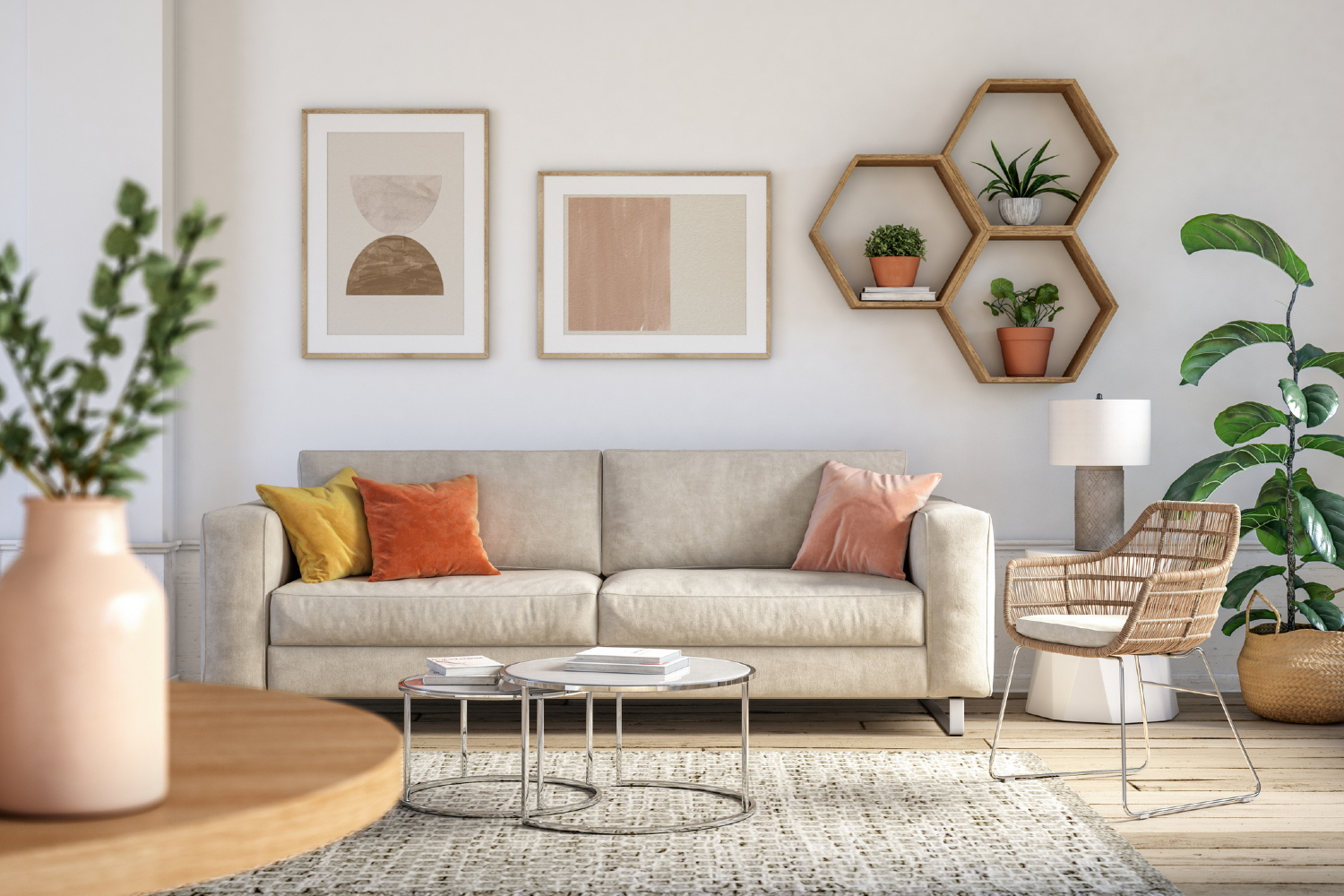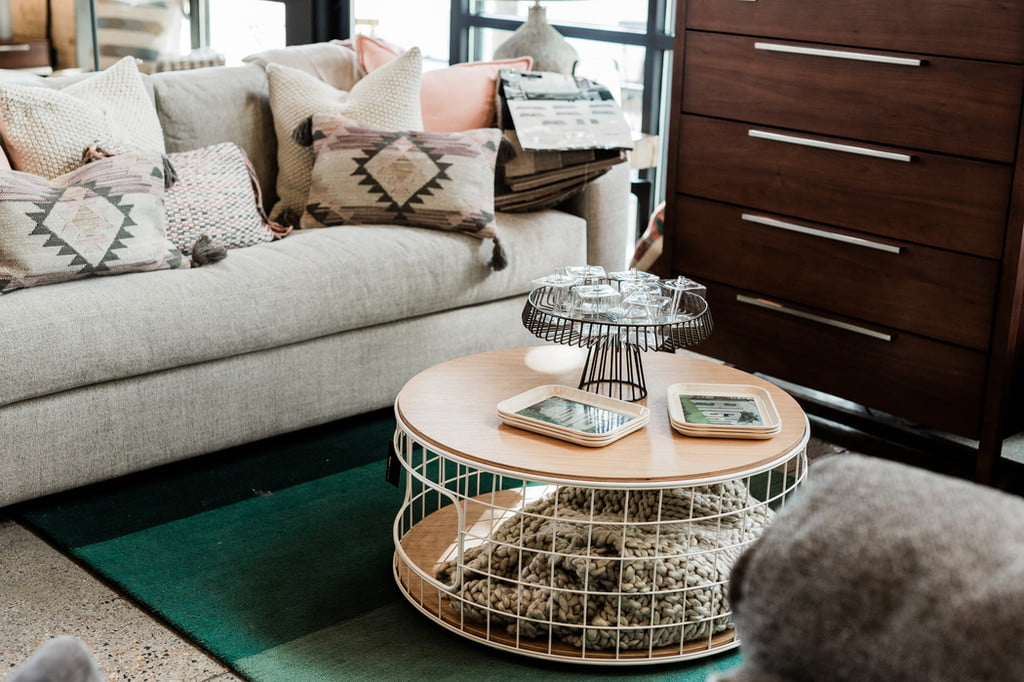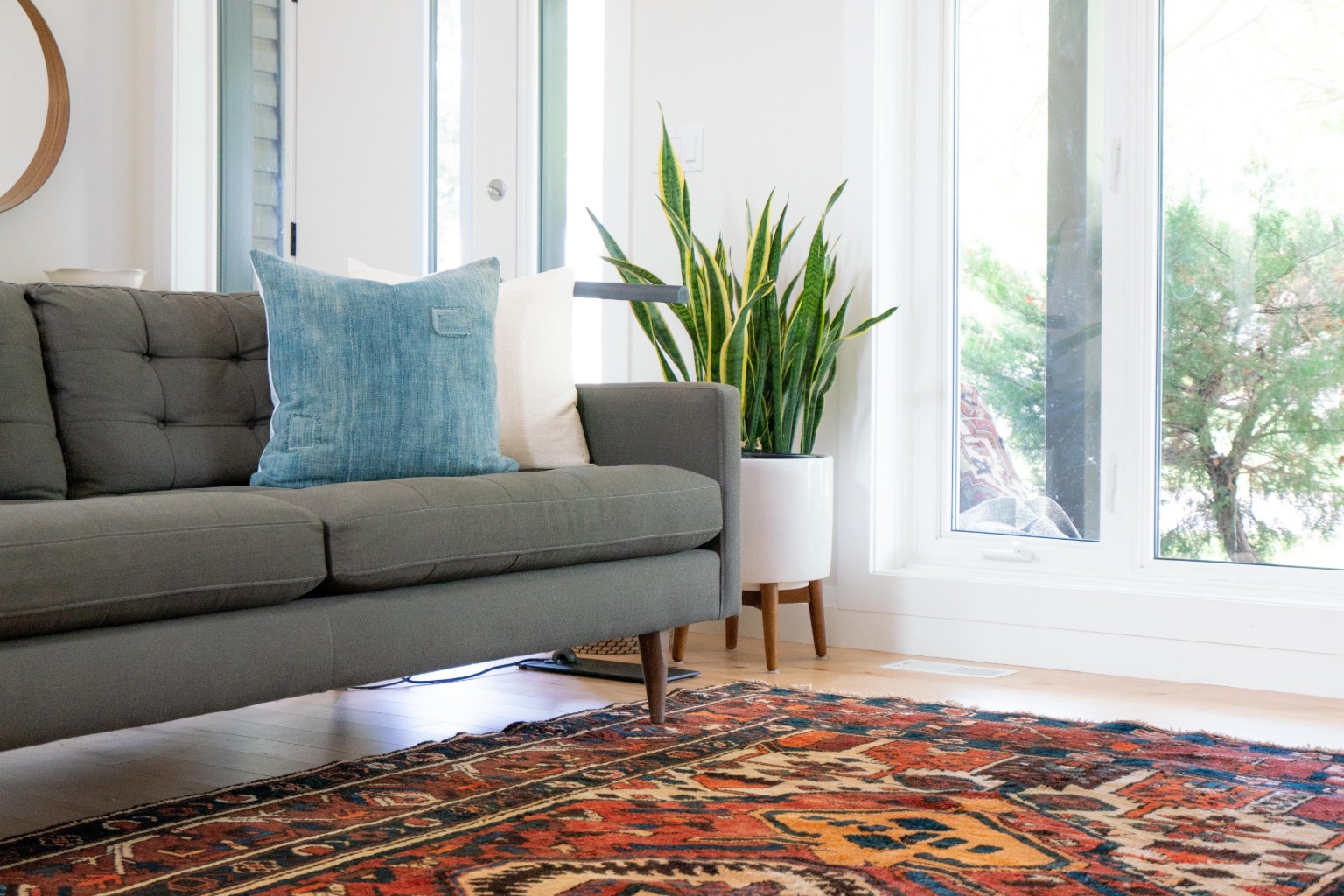Your living room is one of the focal points of the home. It’s where you entertain family and friends, host family game nights, and tuck in to watch movies or the latest binge-able Netflix series. When decorating this space, the first concern is usually the furniture, because it’s crucial to keeping you and your guests comfortable and happy. The next big purchase, however, is the rug. While it’s not as functional as a large sectional or love seat, it’s a key part of warming up the house and bringing the whole room together.
In order to reap all the aesthetic benefits of a rug, however, you have to know how to place it. By keeping a few general rules in mind, you can have a statement piece that makes the room feel bigger, brighter, and just a little more fun.

Think about your room size
The size of the rug depends entirely on the size of the space you are decorating. For instance, if you have a small living room, your best bet is to buy a smaller rug, say a 5′ x 8′ option that runs underneath the coffee table. If it’s a large living room, you can get away with a larger 8′ x 10′ or 9′ x 13′ area rug that settles under the living room furniture (couch, love seat, and coffee table).
If the rug is big enough, you can rest all the furniture on top of it. Otherwise, make sure it’s large enough for at least the front legs of all your pieces to rest on it. Last, it should extend beyond the ends of the couch at least two inches to create a flow between the furniture and the rest of the space.

Leave enough room
This feature can make your living room look bigger as long as there’s an equal balance between exposed floor space and the rug. A rug, especially a bright and patterned one, naturally draws the eye. Therefore, if it’s too big, the busyness can make the room feel crowded. If you have space, try to leave 12 to 18 inches of exposed floor between the rug and the wall. Basically, you should be able to walk around the rug comfortably without running into any walls or furniture.
To pattern or not to pattern
If you’ve purchased a rug with a fun pattern, make sure it’s as visible as possible. For these, it’s best that only the front legs of the furniture are on the rug, leaving as much of the beautiful pattern exposed as possible. These decorative area rugs introduce character and a sense of fun to the room, so if you can’t see it, it won’t provide the desired impact. For maximum visibility, you may need to rearrange the furniture so your guests can take in all the beauty of this statement piece.

Other considerations
Rugs are certainly beautiful, but they’re functional as well, protecting your floors from wear and tear. To best protect your flooring, make sure you cover any high traffic areas and choose a durable rug that cleans easily. We also recommend reading customer reviews on the rug’s you’re considering to learn more about their ability to stand the test of time. Younger kids and young adults tend to sit and lounge on rugs, so make sure yours is cozy enough to relax on and comfortable enough for bare feet.
Keep in mind that these recommendations are only guidelines. At the end of the day, it’s up to you to determine what works best for the size and shape of your living room and what matches your design style. To provide a more eclectic look to a large living room, feel free to play around with multiple rugs and, for example, run one under the sectional and others between two love seats. Pro tip: Save yourself the trouble of placing and reorganizing the rugs all day by playing around with the look via a design app. With these apps, you can get a visual of the space before investing in an expensive and cumbersome rug.
Regardless of what you choose or how you decide to style it, incorporating an area rug into your living space will make it feel cozy and elegant, and your bare feet will definitely thank you on cold winter days.



